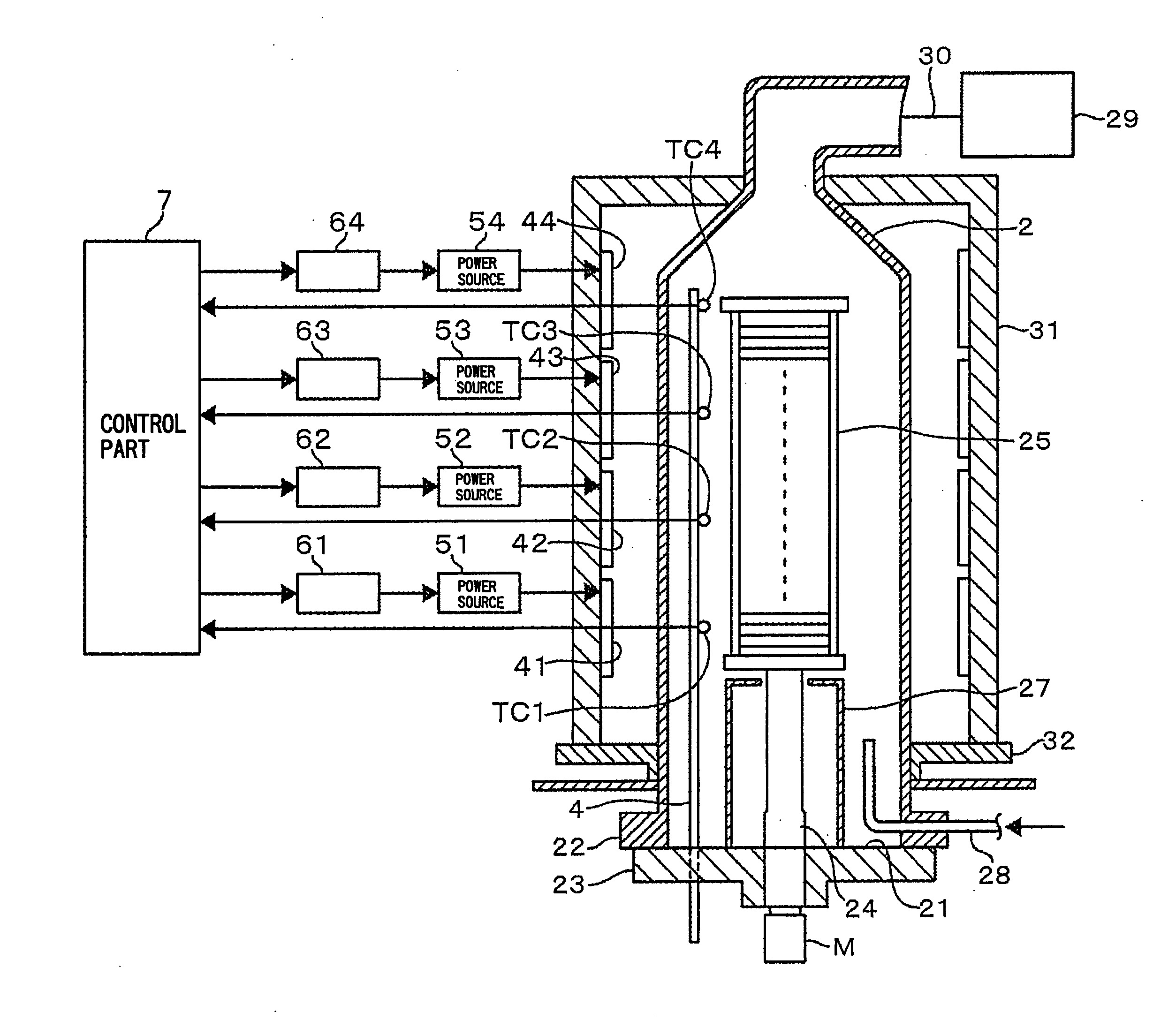Heat processing apparatus, method of automatically tuning control constants, and storage medium
a processing apparatus and control constant technology, applied in the direction of instruments, furnaces, semiconductor/solid-state device testing/measurement, etc., can solve the problems of large development process, inability to properly apply critical sensitivity methods and model applications to cascade control, and inability to properly perform auto-tuning. to achieve the effect of reliable and easy manner
- Summary
- Abstract
- Description
- Claims
- Application Information
AI Technical Summary
Benefits of technology
Problems solved by technology
Method used
Image
Examples
example 1
[0105]By using the above-described vertical heat processing apparatus, the wafer boat 25 holding dummy wafers was loaded into the reaction vessel 2, with setting a temperature of the heater at 300° C. With the lapse of time after loading of the wafer boat 25 into the reaction vessel 2, the temperature in the reaction vessel 2 became stabilized. Thereafter, a set temperature of the heater was raised up to 800° C. An inside of the reaction vessel 2 was a depressurized atmosphere of an inert gas. FIG. 13(a) shows temperature profiles obtained by the respective interior temperature sensors TC1 to TC4 after the first RUN. FIG. 13(b) shows temperature profiles which were obtained when auto-tuning was performed until the third RUN based on the flowchart shown in FIG. 5. By comparing FIG. 13(a) with FIG. 13(b), it can be seen that, as the number of times of RUN increased, the overshoot of the uppermost interior temperature sensor TC1 could be decreased and dispersion in the temperature prof...
example 2
[0106]A first RUN was performed under the same conditions as those of Example 1, other than a set temperature of the heater was 400° C. at the loading of the wafer boat 25 into the reaction vessel 2, and after the temperature in the reaction vessel 2 was stabilized, a set temperature of the heater was set up to 600° C. FIG. 14(a) shows temperature profiles obtained by the respective interior temperature sensors TC1 to TC4 after the first RUN was performed, and FIG. 14(b) shows the result after the fourth RUN was performed. By comparing FIG. 14(a) with FIG. 14(b), it can be seen that the overshoot amount of the uppermost interior temperature sensor TC1 after the first RUN could be decreased and dispersion in the temperature profiles between the zones could be also decreased.
example 3
[0107]A temperature of the heater was set at 400° C. at the loading of the wafer boat 25 into the reaction vessel 2, and after the temperature in the reaction vessel 2 was stabilized, a set temperature of the heater was set up to 760° C. Then, the auto-tuning was executed in the manner described in the embodiment. FIG. 15(a) shows an example of a temperature profile at this time in which the overshoot, the undershoot, and the recovery period converged with target values, while the temperature difference between the zones did not converge with a prescribed value range. FIG. 15(b) shows a temperature profile in which the temperature difference between the zones can fall within a prescribed value, after the tuning as show in FIG. 11 was performed. Also from this result, the inventors of the present invention believe that the steps shown in FIG. 11 are effective.
PUM
 Login to View More
Login to View More Abstract
Description
Claims
Application Information
 Login to View More
Login to View More - R&D
- Intellectual Property
- Life Sciences
- Materials
- Tech Scout
- Unparalleled Data Quality
- Higher Quality Content
- 60% Fewer Hallucinations
Browse by: Latest US Patents, China's latest patents, Technical Efficacy Thesaurus, Application Domain, Technology Topic, Popular Technical Reports.
© 2025 PatSnap. All rights reserved.Legal|Privacy policy|Modern Slavery Act Transparency Statement|Sitemap|About US| Contact US: help@patsnap.com



